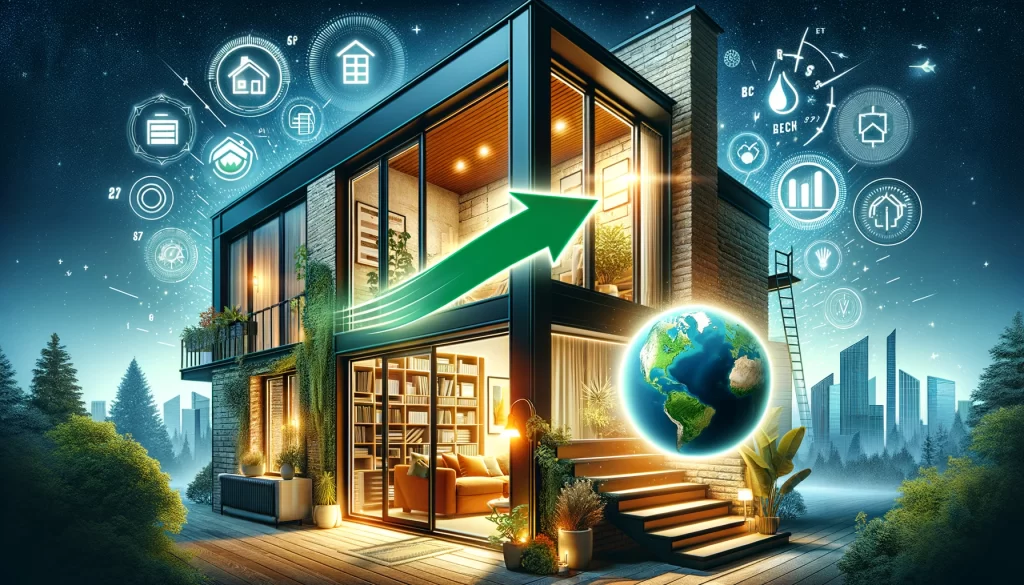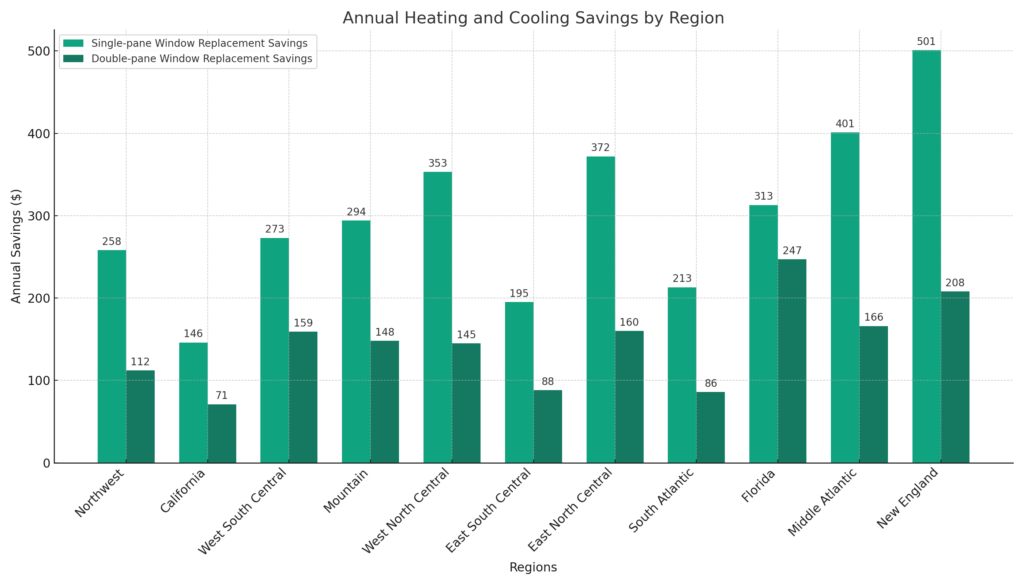Energy-Efficient Windows and Doors: Enhancing Home Comfort and Efficiency

Elevate your home’s comfort and energy efficiency by integrating Energy-Efficient Windows and Doors. This comprehensive guide explores the advantages, selection process, and installation techniques for homeowners aiming to minimize energy loss and optimize utility savings.
Table of Contents
The Significance of Energy-Efficient Windows and Doors
Opting for energy-efficient upgrades can transform your home’s environmental footprint and thermal comfort.
These enhancements not only contribute to a substantial reduction in heating and cooling expenses but also improve the overall living experience through better temperature regulation and noise reduction.
Furthermore, such investments significantly augment property values, appealing to energy-conscious buyers.
Identifying and Selecting Energy-Efficient Windows and Doors
Key Performance Indicators
Energy performance ratings provide a benchmark for comparing the efficiency of windows and doors. Notable metrics include:
- U-factor: This rating gauges the window’s insulation effectiveness. Opt for products with a U-factor of 0.30 or lower for superior insulation.
- Solar Heat Gain Coefficient (SHGC): SHGC values assess the capacity to block heat generated by sunlight. Selections with a SHGC rating of 0.40 or less are optimal for warmer climates, reducing air conditioning demands.
Window Technologies for Enhanced Efficiency
- Glazing Options: Double or triple glazing traps air or inert gas between glass layers, serving as an insulation barrier.
- Low-Emissivity (Low-E) Coatings: These microscopic coatings reflect thermal radiation, aiding in temperature control across seasons.
- Innovative Frame Materials: Frames crafted from fiberglass, vinyl, or treated wood offer improved insulation compared to traditional materials, contributing to the overall energy efficiency of the window.
Door Efficiency Factors
Energy-efficient doors are pivotal in maintaining a home’s thermal integrity. Features to consider include:
- Insulated Cores: Modern doors are often filled with foam insulation, enhancing their thermal resistance.
- Effective Sealing: Comprehensive weatherstripping and tight seals prevent air leaks, a common source of energy loss.
- Proper Installation: A correctly installed door eliminates gaps and drafts, crucial for maintaining energy efficiency.
Implementing Energy-Efficient Windows and Doors: A Step-by-Step Guide

Professional Installation vs. DIY
While some homeowners may possess the skills to undertake this project, professional installation is recommended to ensure optimal energy performance.
Certified installers can address complex issues such as structural integrity and precise sealing.
Ensuring Effective Insulation and Sealing
The efficacy of energy-efficient windows and doors heavily relies on the quality of installation and sealing.
Expanding foam or caulking used around the frames can significantly reduce potential drafts.
Evaluating the Investment: Costs and Incentives
The upfront costs associated with purchasing and installing energy-efficient windows and doors are balanced by the long-term financial and environmental benefits.
Reduced utility bills, improved comfort, and enhanced resale value collectively justify the initial investment.
Additionally, many regions offer grants, tax credits, or rebates to offset installation costs, further encouraging homeowners to make energy-efficient upgrades.

Maximizing the Benefits of Your Energy-Efficient Upgrades
Complementary Measures
To fully leverage the potential of energy-efficient windows and doors, consider additional home improvements such as increased insulation in walls and attics, and the use of energy-efficient lighting and appliances.
These complementary measures can amplify the benefits and savings derived from your upgrades.
Regular Maintenance
Maintaining the efficiency of your windows and doors involves regular inspections and upkeep. Ensuring seals remain intact and mechanisms function smoothly prolongs their lifespan and performance.
Real-World Impact: Success Stories
Discover inspiring transformations and firsthand experiences from homeowners who have embraced Energy-Efficient Windows and Doors by visiting Energy Star’s Success Stories.
These narratives underscore the tangible benefits and savings achievable, serving as a testament to the value of making sustainable home improvements.
Upgrading to Energy-Efficient Windows and Doors represents a strategic decision to enhance your home’s aesthetic appeal, comfort, and sustainability.
By prioritizing energy efficiency, you invest in a future of reduced environmental impact, heightened living comfort, and substantial financial savings.